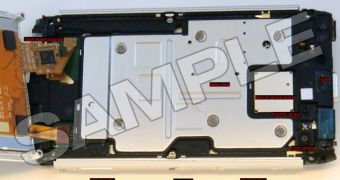ABI Research, a company that provides in-depth analysis and quantitative forecasting of trends in global connectivity and other emerging technologies, has torn down Apple’s latest iPhone to offer a closer look at the hardware.
ABI’s Apple iPhone 4S Teardown provides detailed photos, process evaluation, and part descriptions for all of the major components in the iPhone 4S.
Similar to iFixit’s teardown, but much more detailed, the report takes a close look at parts like power amplifiers (PA), power management, baseband processor, RF, Bluetooth, GPS, WiLAN, and many “discretes”.
“Tying all this information together are unique circuit board photos, performance measurements, processor benchmarks, cost information, and board area data,” says ABI. So what exactly did they find that wasn’t already known?
Not much really. Aside from some interesting observations regarding those poser amplifiers and the Qualcomm-supplied chips, pretty much every other bit of information was already known.
“The iPhone 4S is built with many of the same components found in prior iPhone designs, but the similarities have caused many companies to incorrectly report cost and component market share,” says ABI.
They note “a slight change to the Qualcomm-supplied modem” which, according to the teardown experts, “has resulted in a new front-end configuration.”
ABI technicians explain: “All of the power amplifiers (PAs) are multi-mode, thus counting components does not reveal much. The Avago PA, for instance, covers six bands (four GSM/EDGE bands and two WCDMA bands) and the TriQuint PA covers both CDMA and WCDMA for US PCS band.”
The report continues with a look at the dual-core A5 applications processor with ABI appropriately pointing out that the silicon is not the same one found inside the iPad 2, but a custom version that has been down-clocked to 800 MHz so that it doesn’t suck out too much battery juice.
ABI explains that performance isn’t impacted by the 20% decrease in clock speed thanks to the iPhone’s smaller screen combined with faster memory.
In fact, “The smaller screen combined with faster memory gives the iPhone 4S a slight advantage in a number of performance tests, all while drawing less than two-thirds the power needed for the iPad 2,” says ABI.
The report ends with these “key iPhone 4S facts”:
· Slight modification to the popular Qualcomm MDM6600 modem platform (MDM6610) · New RF front-end configuration utilizing all multi-mode PAs · An A5 application processor running 20% slower than the A5 in the iPad 2, but similar overall performance with much less power · A Murata Bluetooth module supporting BT 4.0. · Other components, such as housing and display, are very similar to the iPhone 4 · A new OS (iOS 5) with a personable application Siri

 14 DAY TRIAL //
14 DAY TRIAL //